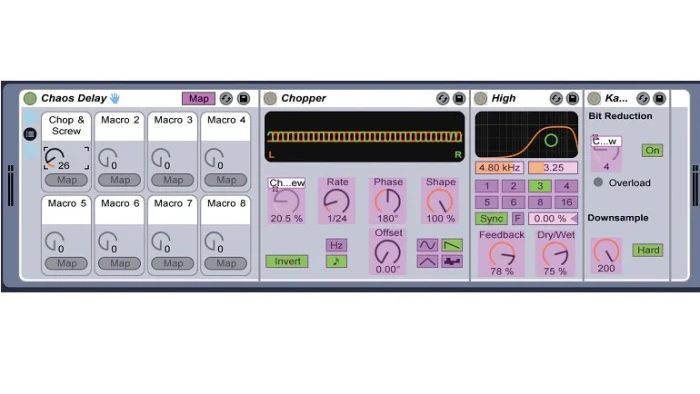

- Ableton live packs location how to#
- Ableton live packs location software#
- Ableton live packs location license#
The interface has been somewhat restyled and does look different, but the changes are subtle. (To be fair, though, Live 9 came about four years after Live 8, so Ableton are being pretty consistent with their releases.) Ableton have always taken a rather conservative, evolutionary approach to new versions, and this is no exception, at least on the outside. Have they succeeded?Ībleton Live 10 arrives amid much anticipation, coming some four and a half years after Live 9 first shipped. If this is the case, then the above will occur.With Live 10, Ableton’s aim is to make the music‑making process as smooth as possible. Note: the number in the file name is dynamic, it may change if you capture into packages a missmatch of settings etc. ~/Library/Application Support/Ableton/Live Database/Live-files-36.db If deploying without this file, then upon fist launch the user has to wait for indexing to complete on the sounds sample libraries upon first launch which can take a long time. The file below contains the database index of the sample sound libraries. Note: Again, the version number will change depending on the version of Ableton live your working with ~/Library/Preferences/Ableton/Live 10.1.3/Options.txt The below file tells Ableton to use Sassafras to obtain a license.
Ableton live packs location license#
If your using Sassafras as a floating license manager to license Ableton. Note: the version number will change depending on the version of Ableton live your working with ~/Library/Preferences/Ableton/Live 10.1.3/Library.cfg Needless to say, the policy should deploy the same sample sounds as the ones listed in this file. The file also contains all the factory/sample sounds installed. Its important to place this into the package without launching the app as it will dynmaically replace the value with the currently logged on user in the file.

The username (typically packaged with the admin account) admin has been replaced with %%USERNAME%%. The file below contains the majority of where the sound libraries are installed etc. Note: the version number will change depending on the version of Ableton live your working with. ~/Library/Preferences/Ableton/Live 10.1.3/Preferences.cfg I say some because not all settings are saved to this file annoyingly. Historically this file contains "some of the application preferences".

Selecting no audo adapter on the capture, users historically have been greeted with a prompt to select and audio adapter which correct for the machine that launched Ableton. If you do this then typically/historically users are greeted with an error about the audio adapter. Why? Because the audio adapter of the machine your making the package on will no doubt be different to the machines your deploying to. The app going down last minimises the chance someone would open the application while components were still being deployed.Īlso we capture settings specifically when no audio adapter is selected. We always push sample library package first, then the settings package, then the. As you said the sample libraries are over 60Gb. 3 controlled which packages go down in what order.

Some, if not all settings dont conform to standard plist or simple text settings. app refused to be indexed by jamf admin no matter how many times one re-opened jamf admin and tried again. app, the settings, and the sample sounds. We devide the whole installation into 3 packages. you simply have to figure out where Ableton is downloading the packages temporarily to. I would not recommend using the technique for that purpose anymore because there are better ways to deploy App Store packages however the technique is solid.
Ableton live packs location how to#
Here’s an old post from Rich Trouton describing how to use this very technique to get packages out of the Mac App Store. Once you figure out exactly what it’s doing and where, you could copy or “hard link” the temporary package somewhere and then you’d have a copy.
Ableton live packs location software#
I know of quite a few large software packages that use that very technique. My uneducated wager (no firsthand experience with Ableton Live) is that it is bringing pkg files to a temp directory somewhere and then quietly installing them. If it is a downloaded pkg file then your installer log would have a record. Also if I were you I would look in your package receipts and your log files on macOS in /Application/Utilities/Console.app while the package is installing. I don’t recommend using Composer to repackage, but I do use it to study where the software is putting stuff on my test Macs and VMs.


 0 kommentar(er)
0 kommentar(er)
